Buying a home is a big step, and choosing the right mortgage is significant. A fixed-rate mortgage provides a steady interest rate for the entire loan period, ensuring that your monthly payments remain consistent. This predictability assists in planning your budget more effectively.
In this article, we will examine what fixed-rate mortgages are, how they function, their advantages and disadvantages, and considerations for selecting the best option for your circumstances.
Understanding Fixed-Rate Mortgages
A fixed-rate mortgage features a consistent interest rate throughout its term, which keeps monthly payments predictable for borrowers. Most homebuyers can choose between common loan terms like 15 and 30 years, with the 30-year term generally resulting in lower monthly payments but higher total interest costs over time.
For example, a borrower selecting a 30-year fixed-rate loan may have an estimated monthly payment of $2,933 on a $464,000 loan with an interest rate of 6.500%, while a 15-year fixed-rate mortgage would lead to larger monthly payments but lower overall interest paid. This structure contrasts with adjustable-rate mortgages, which often have lower introductory rates but can increase when interest rates change. Fixed-rate mortgages provide stability during times of fluctuating rates, as borrowers lock in their mortgage rate and avoid the risk of payment spikes.
Additionally, factors such as credit approval and down payment can also affect real interest rates, further highlighting the benefits of understanding mortgage basics when choosing a loan option. Essentially, a fixed-rate mortgage helps ensure predictable payments, allowing borrowers to budget for their insurance and principal repayment with confidence.
Types of Fixed-Rate Mortgages
30-Year Fixed-Rate Mortgage
A 30-Year Fixed-Rate Mortgage offers a consistent interest rate that stays the same throughout the loan term, distinguishing it from adjustable-rate mortgages (ARMs) that may start with lower rates but change later. This fixed-rate option allows borrowers to anticipate their monthly payments, aiding in budget management over three decades. Initially, payments mainly cover interest, while more principal is paid off later, following an amortization schedule.
Borrowers gain stability in financial planning since the mortgage rate and payments remain steady, unlike variable interest rates. When exploring this loan option, considerations such as down payment, credit approval, and total loan amount are significant. Borrowers should also think about their intended length of stay in the home and evaluate loan terms for the best match. For instance, those looking for lower monthly payments may lean towards the 30-year term, even if it results in higher interest payments overall.
Grasping the fundamentals of mortgages can assist individuals in making well-informed choices regarding their home financing.
15-Year Fixed-Rate Mortgage
A 15-year fixed-rate mortgage offers benefits such as lower total interest costs over the life of the loan compared to longer-term options like a 30-year fixed-rate mortgage. This loan term results in higher monthly payments, which may be a drawback for some borrowers. However, with a fixed-rate mortgage, the interest rate remains constant, providing predictable monthly payments that can help with budgeting.
Generally, the interest rate on a 15-year mortgage might be lower than that of a 30-year mortgage, making it an attractive loan option for those who can afford the higher payments. Homebuyers may find choosing a 15-year term advantageous if they plan to stay in their home long-term and wish to build equity faster.
Additionally, with interest rates affecting market conditions, selecting a mortgage with a low introductory rate could benefit those seeking to minimize their costs.
Benefits of a Fixed-Rate Mortgage
Predictability of Payments
Fixed-rate mortgages offer borrowers a stable monthly payment, aiding in effective budget planning. With this type of loan, the interest rate stays the same for the entire term, typically spanning 15 to 30 years. Borrowers benefit from being shielded against fluctuations in market interest rates, unlike adjustable-rate mortgages that may start with a lower introductory rate but adjust over time.
While fixed payments provide consistency, other costs like property taxes, insurance, and home ownership expenses can impact overall financial commitments. The loan size and down payment also affect monthly payments, and rising interest rates can increase estimated payments for new loans, even though existing fixed-rate loans remain unchanged. Having a clear grasp of these mortgage fundamentals helps borrowers make educated decisions regarding their loan choices, allowing them to maintain their budget amidst market changes.
Protection Against Interest Rate Increases
Homebuyers can protect themselves from potential interest rate increases by selecting a fixed-rate mortgage. With this type of loan, the interest rate remains unchanged for the entire term, enabling borrowers to know their exact monthly payments and budget effectively. In contrast to adjustable-rate mortgages , which might begin with a low initial rate that can rise, a fixed-rate mortgage ensures that monthly payments stay constant, no matter how the market fluctuates.
When considering this option, individuals should assess their financial situation, looking at factors like the down payment, credit approval, and loan amount. Calculating the estimated monthly payment based on the principal and mortgage terms helps determine affordability. Those who value stability and want to avoid payment surprises should favor a fixed-rate mortgage, as it facilitates better planning and peace of mind.
This commitment to a steady rate can greatly influence long-term financial goals, especially when real interest rates are increasing.
Considerations Before Choosing a Fixed-Rate Mortgage
Cons of Fixed-Rate Mortgages
Locking in a fixed interest rate for an extended period can limit a borrower’s flexibility, particularly if rates fall. Homeowners with fixed-rate mortgages may miss opportunities for savings when the market offers lower rates. Although traditional fixed-rate loans ensure predictable monthly payments, they may be higher than the low introductory rates available with adjustable-rate mortgages.
While borrowers benefit from stability in payments over time, fixed-rate mortgages can result inslower equity growth since early payments primarily address interest rather than the principal. This can be a drawback for those planning to sell or refinance quickly, as equity may not reach anticipated levels.
Additionally, the higher upfront costs associated with fixed-rate mortgages, including elevated rates or mortgage insurance, may pose challenges for prospective homebuyers already dealing with down payment and loan amount hurdles.
Right Loan Term for Your Situation
When selecting the right loan term for a fixed-rate mortgage, borrowers need to take various factors into account. The preferred term often varies based on their financial circumstances, including the loan amount and down payment.
For example, a smaller down payment might necessitate a longer term, resulting in lower monthly payments. If a borrower has a consistent income and intends to remain in their home for an extended period, a 30-year fixed-rate mortgage can offer predictability and lower monthly payments, though it leads to higher overall interest payments due to prolonged amortization. Conversely, individuals with clearer financial goals or substantial savings may opt for a 15-year fixed-rate mortgage, which, despite higher monthly payments, brings down total interest expenses. The present interest rates also influence decisions. A borrower should evaluate rates and terms from multiple lenders to discover a loan option that suits their requirements.
Additionally, those contemplating an adjustable-rate mortgage (ARM) might consider a lower introductory rate but must assess the possibility of future rate hikes in relation to their financial plans and income stability. Grasping these mortgage fundamentals assists in making a well-informed choice regarding loan terms.
Using a Fixed-Rate Mortgage Calculator
When using a fixed-rate mortgage calculator, borrowers should enter important inputs like the loan amount, interest rate, term length, and down payment for accurate results. These details help calculate the estimated monthly payment and the total cost of the loan over time.
A fixed-rate mortgage calculator allows users to explore various loan terms, such as comparing a 15-year fixed-rate loan to a 30-year term, showing how monthly payments differ based on the interest rate and amortization schedule. By seeing how different rates affect their payments, borrowers can better understand options, including fixed-rate and adjustable-rate mortgages. This insight aids in financial planning as it provides clarity on what to expect when taking on a home loan. Knowing the exact mortgage payment and overall costs assists in budgeting for monthly expenses, including insurance and property taxes. Understanding these mortgage basics is significant for making informed decisions.
Comparing Fixed-Rate Mortgages to ARMs
Advantages of ARMs
Adjustable-rate mortgages can provide cost savings compared to fixed-rate mortgages due to their low introductory rates, making monthly payments more manageable for borrowers.
For example, a borrower may discover that an ARM with a low initial rate results in a lower estimated monthly payment than a fixed-rate loan. This situation can free up funds for other expenses, such as insurance or a larger down payment. The flexibility of ARMs also attracts various financial situations; as interest rates shift, so do the payments, potentially allowing borrowers to benefit from lower real interest rates when the market is favorable. Those needing a larger loan amount might find that ARMs enable them to afford more homes during the early years when payments are reduced. Lenders are drawn to offering these loan options, especially when borrowers seek credit approval, knowing they might sell or refinance before the interest rate adjusts.
This combination of factors makes ARMs an appealing alternative to the more stable fixed-rate mortgage for those who can navigate the risks tied to changing interest rates.
Disadvantages of ARMs
Borrowers may face significant financial risks when they choose an adjustable-rate mortgage instead of a fixed-rate mortgage. With an ARM, the interest rate starts low, often called an introductory rate, but can change based on market conditions. This means that after the initial period, the interest rate can rise, leading to higher monthly payments. For a borrower making a budget, these unpredictable changes can be hard to manage.
While fixed-rate mortgages provide stability with consistent payments, ARMs could cause borrower to suddenly pay much more, complicating their budgeting process.
Additionally, ARMs can have limits or caps on how much the interest rate can increase, but these might not fully protect borrowers from significant hikes, resulting in monthly payments that exceed what they can comfortably afford. Thus, grasping these mortgage fundamentals is important when deciding on a loan option, especially for those with fixed incomes or tight budgets. With the right credit approval, awareness of both the loan amount and the mortgage rate can help borrowers choose the best path for their financial future.
Finding the Right Fixed-Rate Mortgage for Homebuyers
Shopping for the Best Rates
Homebuyers can compare rates by gathering quotes from various lenders and focusing on the annual percentage rate (APR) along with lender fees. Knowing mortgage fundamentals allows borrowers to evaluate different loan options, such as the distinction between fixed-rate mortgages and adjustable-rate mortgages. Monitoring real interest rates, affected by factors like credit approval and economic trends, helps buyers choose the right time to lock in a lower interest rate on a fixed-rate loan.
Furthermore, assessing loan terms is important; for instance, a longer term may lead to lower monthly payments, while shorter terms usually have lower interest rates. Other expenses, such as insurance, property taxes, and the down payment, should also be factored in when estimating the total monthly payment and loan amount.
For example, a borrower may discover that a mortgage payment on a $400,000 loan with a 30-year term at a 6.5% interest rate results in significant long-term savings compared to an ARM with a low introductory rate but uncertain future payments. Understanding these factors helps homebuyers secure the best fixed-rate mortgage for their requirements.
Choosing a Reputable Lender
Homebuyers should consider various criteria when selecting a reliable lender for a fixed-rate mortgage. A lender’s history can often be gauged by their experience, customer feedback, and clear loan terms. Prospective borrowers can confirm a lender’s qualifications by reviewing their licenses, affiliations with national associations, and approval rates. This information contributes to a sense of dependability.
Reading testimonials can also indicate how previous borrowers experienced their mortgage payments and overall journey. Factors such as consistently low interest rates and attentive customer service suggest a dependable lender. Borrowers should compare lenders’ rates, including introductory rates on adjustable-rate mortgages and fixed-rate loans. Assessing the estimated monthly payment and the significance of down payment options, alongside the terms of the home loan, ensures that the selected loan aligns with their financial objectives.
Grasping the basics of mortgages, including how amortization impacts principal payments over time, will empower borrowers in their choice of lending institution.
FAQ
What is a fixed-rate mortgage, and how does it work?
A fixed-rate mortgage offers a consistent interest rate throughout the loan term, typically 15 or 30 years. Your monthly payments remain stable, making budgeting easier. For example, if you borrow $200,000 at 4% interest, your monthly payment will stay the same for the entire term.
What are the advantages of choosing a fixed-rate mortgage?
A fixed-rate mortgage offers stable monthly payments, making budgeting easier. For example, locking in a low rate protects you from future interest hikes, ensuring predictable costs over time. This is ideal for long-term homeowners who value financial stability.
How do I determine the best interest rate for a fixed-rate mortgage?
To determine the best interest rate for a fixed-rate mortgage, compare offers from multiple lenders, use online mortgage calculators for estimates, and check current market trends. For example, rates can vary by 0.25% between lenders, so get quotes from at least three to find the best deal.
What is the typical loan term for a fixed-rate mortgage?
The typical loan term for a fixed-rate mortgage is 30 years, but you can also find 15-year and 20-year options. Choosing a shorter term may increase monthly payments but decrease overall interest paid. Consider your budget and long-term goals when deciding.
Can I refinance my fixed-rate mortgage, and if so, how does that process work?
Yes, you can refinance your fixed-rate mortgage to secure a lower interest rate or change terms. Start by comparing lenders for better rates, gathering necessary documents, applying online or in-person, and then closing on the new loan. For example, refinancing from 4% to 3% can save you money monthly.
Interested in a fixed-rate mortgage? Contact Champions Mortgage to learn all about how it can offer stability and predictability for your home buying journey. Let’s discuss the benefits and see if it’s the right choice for you!







